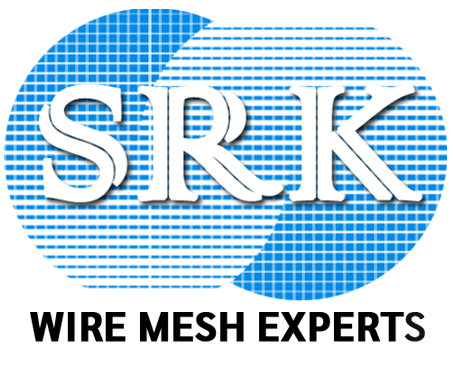In every industry, wire mesh is an absolute necessity because of its unmatched diversity in applications, which span from filtration systems to buildings. The intricacies of wire mesh standards, computations, and requirements are crucial in guaranteeing that the appropriate mesh is chosen for certain purposes.
This comprehensive guide aims to illuminate the intricate world of wire mesh, unraveling its specifications and standard size details. And also weight calculations while spotlighting their significance and applications.
Wire Mesh Specifications
The intricate details within wire mesh specifications delineate the weaving process used to create grid patterns. These specifications encompass wire gauge, mesh size, materials used, and the weaving technique applied, providing crucial insights into the mesh’s structural integrity. Moreover, the specifications of the wire mesh consist of the measurements of the wire mesh, whether it is its length, width, area, or weight.
These specifications help guide the right and accurate size with the proper amount. Also, specify the tolerance required by the mesh for any project or application. Here are the specifications that describe a wire mesh for reference:
Mesh count: The mesh count signifies the number of openings or apertures per linear inch in a woven wire mesh. A higher mesh count denotes finer openings, crucial for precision applications like filtration and separation.
Wire Diameters: Measured as the total thickness of the wire, the wire mesh’s diameter is another crucial factor in determining wire mesh and welded mesh specifications. Wire diameter, specified in gauge or millimeters, significantly influences the mesh’s strength and durability. Thicker wires provide robustness but may reduce flexibility, while thinner wires offer finer details, albeit with reduced strength.
Micron rating: This is a measurement of the mesh’s pores or openings, usually expressed in microns (µm). Filtering applications require it, as it specifies the maximum particle size that the mesh allows to pass through. Hence, it is essential for the precise retention or permitting of certain particles.
Aperture (opening area): The size of each individual opening in the wire mesh is referred to as the aperture. Usually, the clear opening between the wires or the distance between the centers of two neighboring wires is used to quantify it. This measurement is essential to confirming whether the mesh is appropriate for certain materials or not.
Length: The horizontal measurement of the woven wire mesh in the direction of the wires is referred to as its length. Typically, it is expressed in meters (mtr) or millimeters (mm). Longer rolls or sheets of mesh weigh more than shorter ones do.
Width: The width of the mesh is the vertical measurement across the mesh sheet’s wire, as opposed to length. It can alternatively be expressed in meters (mtr) or millimeters (mm). It is positively correlated with the weight of the wire mesh; the greater the width, the greater the weight.
How is wire mesh specified?
Wire mesh specification involves a myriad of factors, encompassing material type (such as stainless steel), mesh count, wire diameters, weaving technique (e.g., woven wire mesh), open area, and wire diameter. Each specification plays a pivotal role in determining the mesh’s strength, durability, and suitability for specific applications.
What is a wire mesh specification chart?
A comprehensive wire mesh specification chart serves as a navigational compass through the diverse landscape of mesh types. It encapsulates specifications, materials used, and intended applications. That offers the users a quick reference guide to comprehend the breadth of wire mesh categories.
What are the standard sizes of wire mesh?
The wire mesh standard sizes are a cornerstone, varying in accordance with intended use and industry standards. Understanding these sizes becomes pivotal in assessing the availability and compatibility of wire mesh for diverse projects.
What Constitutes the Standard of Wire Mesh?
The standardization of wire meshes consists of industry-defined norms governing materials, sizes, weaves, and other critical parameters. This adherence ensures consistency and quality in both the production and application of wire mesh across various industries.
Calculator
The wire mesh weight calculator aids in estimating mesh weight based on specific dimensions. Its utility extends to material planning and project budgeting, streamlining the manufacturing and application processes.
Use the given calculator for calculations.
Conclusion:
In conclusion, wire mesh specifications constitute a multifaceted realm, encompassing diverse parameters crucial for selecting the right mesh for an array of applications. Understanding standards, stainless steel mesh specifics, mesh count, wire diameters, and woven wire mesh characteristics empowers users to make informed decisions, ensuring optimal performance across industries.
By delving into these intricacies, one gains a profound appreciation for the versatility and significance of wire mesh, unlocking its potential for efficient utilization across a variety of applications.
Are you in search of dependable wire mesh solutions?
Look no further! As SRK Metals is a reputable manufacturer and supplier, we offer top-notch solutions featuring high-quality woven wire mesh that fortifies your projects. Our extensive array of products ensures the perfect wire mesh tailored to your distinct needs, offering a range of metal options, sizes, patterns, and customizable choices. Our commitment goes beyond just meeting your requirements; we prioritize customer satisfaction by delivering superior-quality wire meshes that elevate your project’s success.
Get in touch with SRK Metals today regarding the fulfillment of all your wire mesh requirements. Discover excellence in wire mesh and elevate your projects with strength, resilience, and aesthetic finesse. Make the savvy choice with SRK Metals.”

